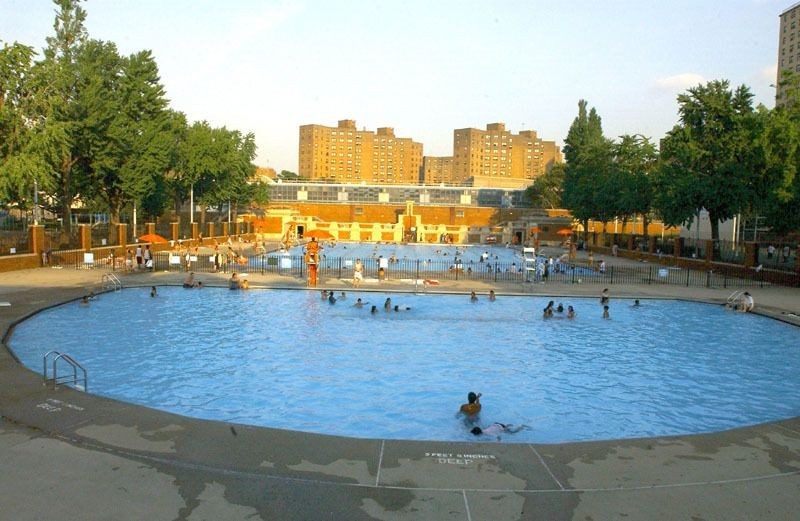-
Astoria Park, on the west shore of Queens, extends from south of the Triborough Bridge to north of the Hell Gate Bridge. With a panoramic view of the skyscrapers of midtown Manhattan in the south to the Hell Gate channel in the north, the scenery presents the diverse landscape of New York City. The Hell Gate channel, formed by faults Read more...
-
The East 54th Street Recreation Center opened on Feb. 17, 1911, with 79 showers for men and 59 for women. Built during an era of socially progressive initiatives, the center’s original purpose was to provide sanitary facilities for the city’s working classes. Although the four-story, neo-classical building is not a designated landmark, much of its original character and history remains. Read more...
-
In 1900 the park, featuring the gymnasium and playground, was completed. The Hamilton Fish Park Gymnasium is among the most notable small civic buildings in New York City. Designed in 1898 by Carrère & Hastings, architects of the New York Public Library on Fifth Avenue, this exuberant Beaux-Arts style structure is the only survivor of the original park plan. The Read more...
-
The site of two World’s Fairs, Flushing Meadows Corona Park, located at the geographic heart of New York City, contains several of the City’s most recognizable landmarks. Built in Flushing Creek’s plain, the site was originally marshland before it was converted to a landfill. Today the park is the second-largest in the city (behind Pelham Bay Park in the Bronx). Read more...
-
This park honors Daniel D. Tompkins (1774–1825), who served as Governor of New York from 1807 to 1817 and as Vice President of the United States under James Monroe (1758-1831) from 1817 to 1825. Peter Stuyvesant (1610–1672), director general of the Dutch colony of New Netherland, owned this property during the 17th century. Tompkins later acquired it, and by the Read more...
-
Marcus Mosiah Garvey (1887-1940) was an advocate for economic independence within the black community and also became a proponent of black nationalism. He was born in St. Ann’s Bay, Jamaica on August 17, 1887 and immigrated to Harlem in 1916, where in 1918 Garvey established the headquarters of his Universal Negro Improvement Association (UNIA). At the UNIA’s first convention, held Read more...
-
The site of winter ice skating at The Pond, free summer movies on the lawn, and endless meals and meetings at its tables, Bryant Park serves its role well as a centrally located Manhattan park. Just blocks from Times Square and the theater district and mere feet from the New York Public Library, the park is an ideal resting spot Read more...
-
Located at the southern tip of Manhattan with ready access to the harbor and the Hudson River, Battery Park is where the history of New York City began. The area’s strategic location was recognized by Native Americans and Dutch settlers, who called it Capske Hook (from Kapsee, an Indian term for rocky ledge). Near this point, the colonists of the Read more...
-
A state-of-the-art facility, the Chelsea Recreation Center is a neighborhood gem that boasts eclectic offerings for New Yorkers of all ages. Chelsea is one of the largest recreation centers in the city, and visitors make full use of its crisp facilities and extensive sports, arts, and educational programming for kids and adults alike. The center features a six-lane, 25-yard pool, Read more...
-
The Asser Levy Recreation Center has its origins in the Public Health movement of the turn of the last century. Between 1820 and 1870, New York City’s population increased tenfold, while cholera and typhoid epidemics raged through crowded neighborhoods. Most tenement buildings lacked such basic facilities as toilets and showers. In 1896 a survey conducted in the Lower East Side Read more...










